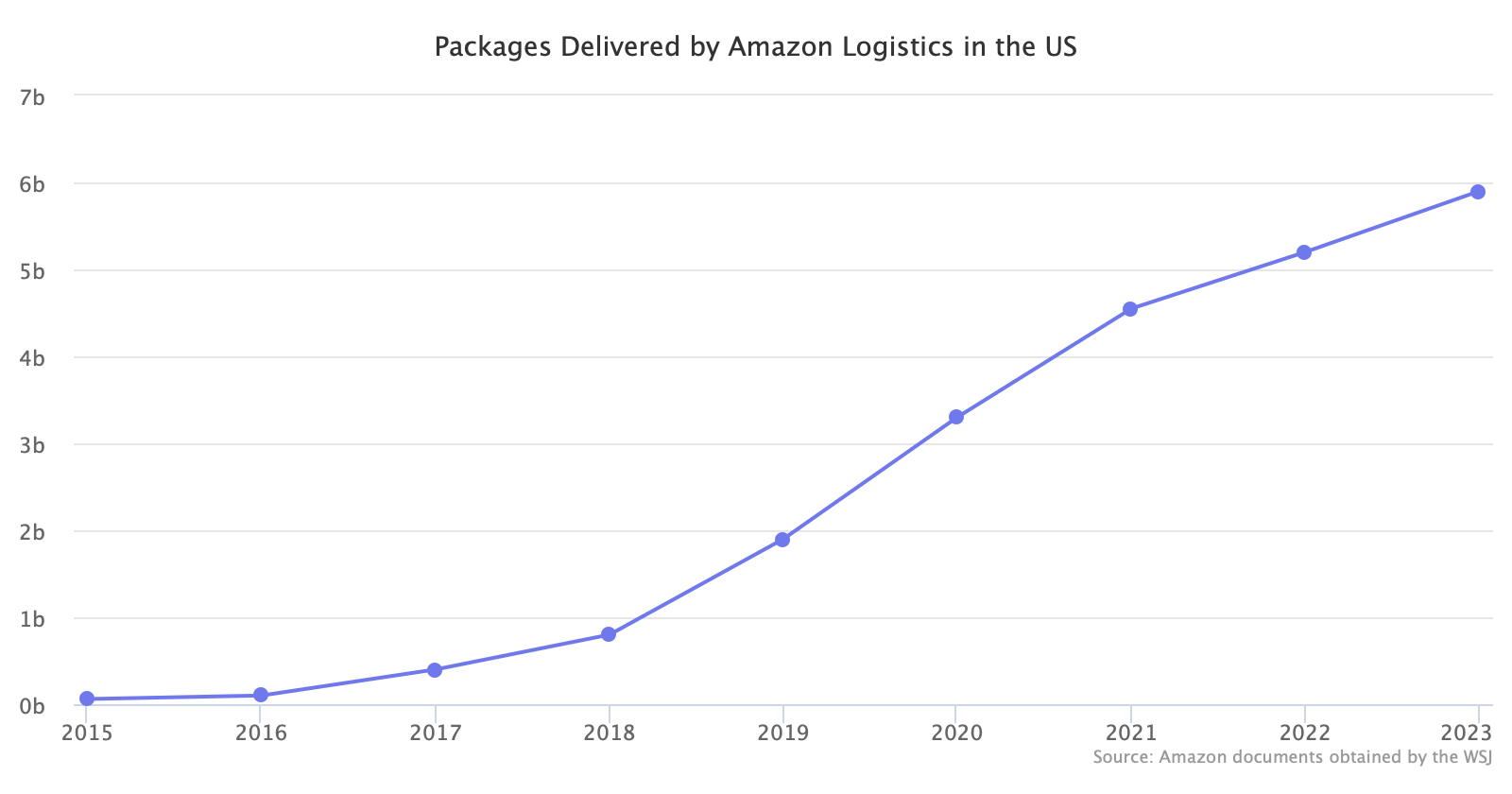Ten years after Jeff Bezos promised half-hour shipping with Amazon drones, the company has made zero drone deliveries. But it now delivers billions of packages yearly using good-old delivery trucks.
“Amazon is testing delivering packages using drones,” CEO Jeff Bezos said on the CBS TV news show 60 Minutes on December 1st, 2013. The service, called Amazon Prime Air, promised to deliver packages in 30 minutes or less using small, uncrewed aircraft.
But it wasn’t until 2020, seven years later, when Amazon won Federal Aviation Administration (FAA) approval to operate its fleet of Prime Air delivery drones. “This certification is an important step forward for Prime Air and indicates the FAA’s confidence in Amazon’s operating and safety procedures for an autonomous drone delivery service that will one day deliver packages to our customers around the world,” David Carbon, vice president of Prime Air, said in a statement then.
By 2022, Amazon was still only testing with a small set of roughly 1,000 selected customers. “The new test flights are part of Amazon’s plan to reach at least 12,000 total trial flights by the end of the year [2022], the documents say. Of the 12,000 flights, Amazon expects roughly 5,000 to be commercial flights for trial customers, with the other 7,000 being run for separate durability and reliability testing,” wrote Eugene Kim and Katherine Long for Insider. Federal regulators bar Amazon’s drones from flying over people, roads, or buildings.
Amazon started the drone hype, which many other retailers and other technology companies later followed. Some, by now, deployed drones at a much larger scale than Amazon’s and in markets that uniquely benefit from them. But in the same ten-year span, Amazon was also working on disrupting logistics without groundbreaking technology and thus went virtually unnoticed.

Amazon will deliver 5.9 billion packages in the U.S. in 2023, based on Amazon’s internal projections obtained by the Wall Street Journal. For the first time, it will deliver more packages than FedEx and UPS. When Amazon announced drones in 2013, it had barely started building its logistics network. It wasn’t until 2018 that it delivered a billion packages in a year. In 2020, it did more than three billion packages. In 2023, it will do nearly six billion.
Amazon made no deliveries itself. Thousands of small businesses work as Amazon Delivery Partners and employ hundreds of thousands of drivers. They drive Amazon-branded trucks and delivered billions of packages this year. However, plenty of them have complained about operating conditions and pay, “We were treated like robots,” Ted Johnson said in an interview with Bloomberg. “They’re so data-driven they don’t know how to treat people with dignity and respect.”
Not everything sold on Amazon comes delivered by Amazon, but it’s more than half and growing. Combined with its fulfillment footprint spanning over a thousand warehouses and other fulfillment infrastructure, it is entirely self-reliant. Amazon’s drone announcement was a head fake. Because, for all the attention it got, it diverted from the building of unconquerable fulfillment infrastructure. The thousands of packages delivered by drones are effectively zero compared to the billions delivered by trucks.
“One day, Prime Air vehicles will be as normal as seeing mail trucks on the road today,” Amazon said in 2013. Amazon Prime Air vehicles - drones - are still rare, but in 2013, seeing Amazon mail trucks on the road was rare, too. And now they are everywhere, along with Amazon planes and container ships full of Amazon-branded containers.

